Celebrity chef Andrew Zimmern is all about MSG, declaring at the World Umami Forum last week, where he was the Master of Ceremonies, that MSG has been a “game-changer” for his cooking. Yes, his cooking.
“I feel like I need to make up for lost time,” he told us, speaking about his discovery of the wonders of MSG, also known as monosodium glutamate.
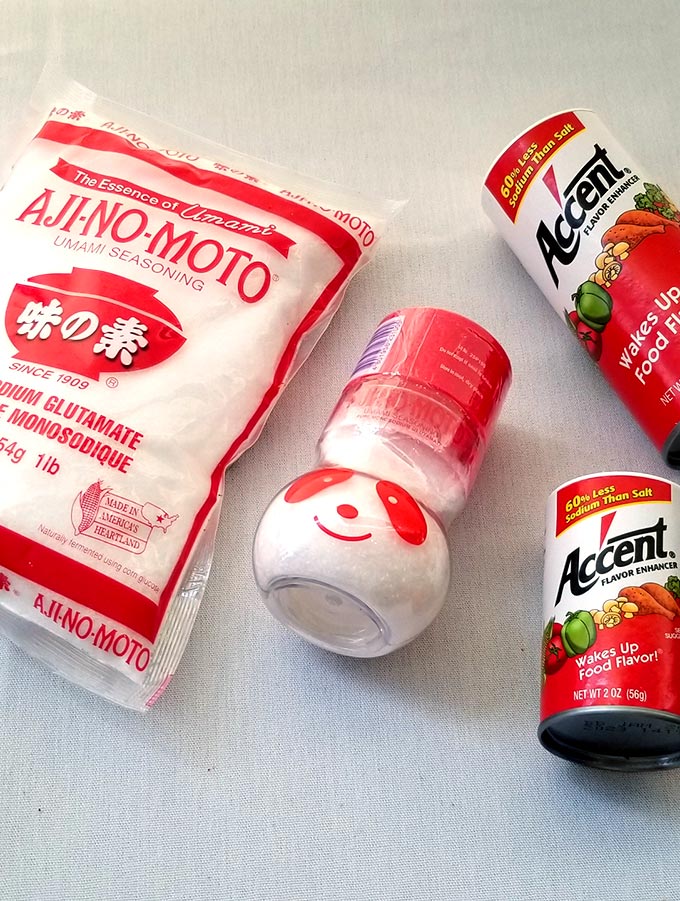
After tasting a tiny piece of 10-year aged cheddar, which happens to have insane levels of naturally-occurring glutamate, Zimmern said it had a “cyclonic effect” on taste.
Or perhaps you could say umami is “symphonic,” like “10 instruments playing major chords at the same time,” Zimmern said.
Jump to:
For those of you who are wondering if I am really talking about the same flavor enhancing additive that you take great pains to avoid. Yes, I am!
You may also be wondering then how it’s possible that a chef as reputed as Zimmern—a four-time James Beard award-winning chef and TV personality of Travel Channel's Bizarre Foods franchise, and much more—would embrace MSG?
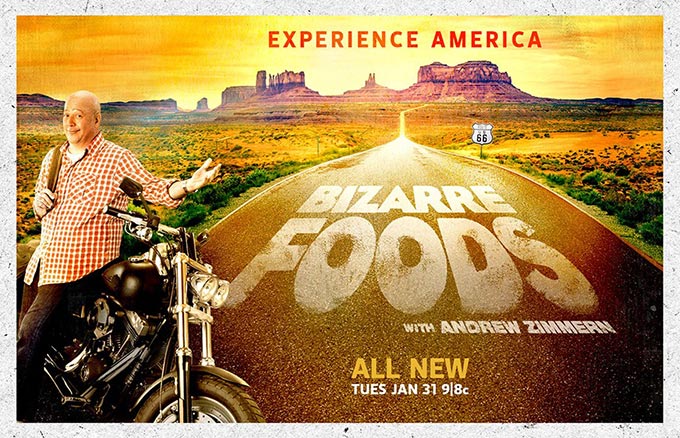
Well, hang on for the ride, because I believe the tsunami of MSG promotion has just begun. I predict thousands of chefs, dietitians, and likely every media outlet that exists will soon espouse it.
Hang on for the ride, because I believe the tsunami of MSG promotion has just begun.Click To TweetWhat you’ll hear is that MSG is safe, and that your fears are unfounded.
You’ll hear that MSG is naturally derived from fermentation, and that the same glutamic acid in MSG occurs in all kinds of foods. Most importantly, it will be suggested that MSG can help you reduce your salt intake by virtue of enhancing food’s flavor.
All these messages would be true, too, as far as I can understand. Yet why, after over 50 years of dead silence and avoidance, is MSG being dredged up now and pushed on us?
The answer is simple. Umami, which describes the flavor of MSG, is suddenly trending in the United States, and the makers of MSG believe that our interest in umami presents an opportunity.
What is umami?
The word umami, which literally means “essence of deliciousness” in Japanese, was coined by Dr. Kikunae Ikeda over a hundred years ago.
While enjoying his kombu dashi seaweed soup broth, which is ubiquitous in Japan, Ikeda got to thinking about the uniqueness of the taste.
Back in the laboratory, he discovered the full-bodied flavor of his dashi came from the glutamate, also known as glutamic acid.
Glutamic acid is, in fact, one of the amino acids that builds proteins. It is one of the most abundant amino acids found in nature, and it’s responsible for a kind of full-bodied meaty and/or savory flavor in food.
Then, in 2002, scientists discovered that our tongues have unique receptors that can identify the umami taste, and they dubbed it the fifth basic taste, after sweet, sour, salty, and bitter.
Umami is actually a super-cool taste, much different from the others.
It increases salivation. You could say it is mouth-watering.
The flavor is incredibly complex. It fills the mouth with balanced taste, and lingers much longer than any other taste. It’s a taste you savor in the mouth.
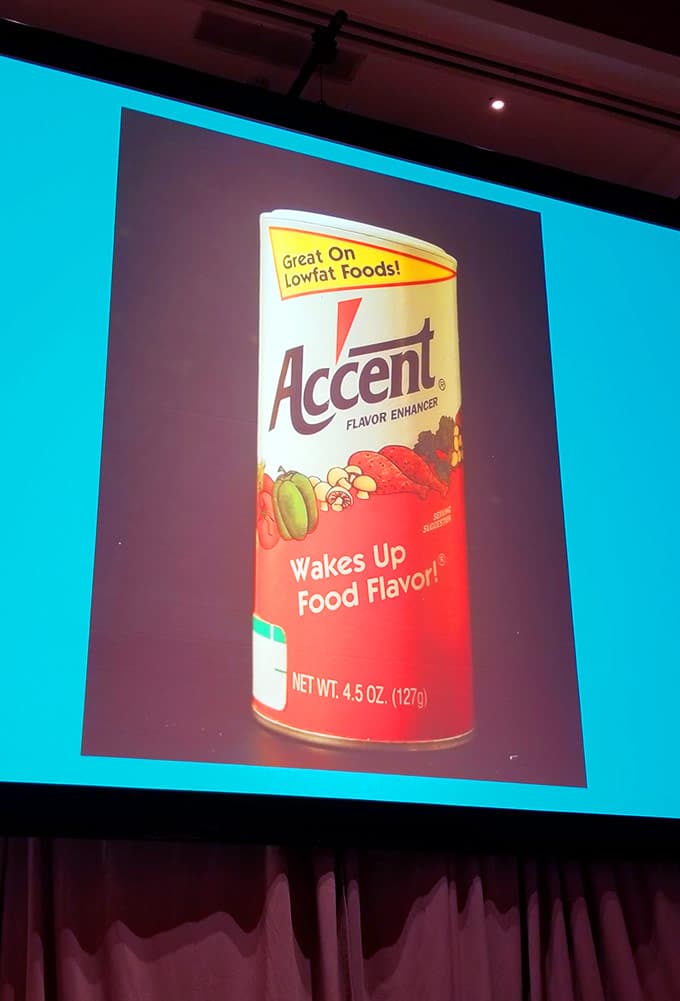
What exactly is MSG?
The rise of umami is a game-changer for MSG. The additive has had a pretty serious public relations problem for a while. So what is MSG?
Monosodium glutamate is comprised of glutamic acid, with sodium added as a stabilizer. It used to be made in a lab, but today it is made from the fermentation of sugar, something like corn, beets, or molasses.
Monosodium glutamate looks like salt, and it is even sold as a shaker in Japan.
The taste of MSG is a concentrated form of umami.
Supporters and numerous scientific studies have concluded that the body cannot distinguish between glutamic acid in MSG, from the glutamic acid that is naturally occurring in food.
Monosodium glutamate is potent, and advocates say you should use it like any other ingredient, such as a seasoning or spice. To be clear, you probably shouldn’t eat buckets of the stuff.
Of course there are allowable limits set by the FDA, and you likely don’t have to worry about overuse if you consume it normally.
And if you eat processed food in America, you are already eating your share of MSG.
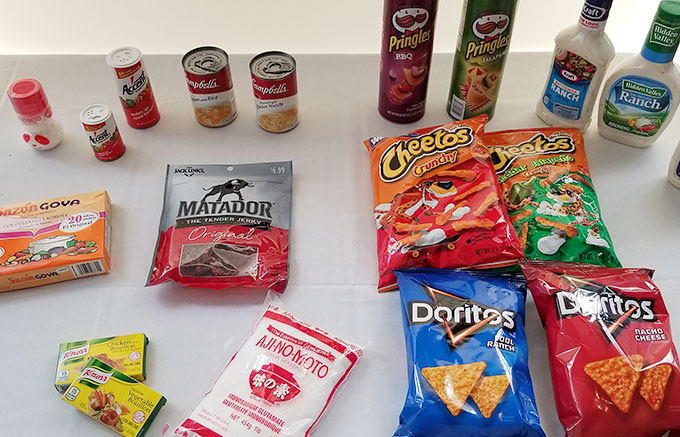
Americans don’t generally appreciate MSG, but when it’s hidden in tasty food, we don’t balk.
It’s what makes Kentucky Fried Chicken, Doritos, and Hidden Valley Ranch dressing so craveable.
The first manufacturer of MSG, beginning in 1909, was Ajinomoto Group. Ajinomoto is still the world leader for the ingredient.
In the United States, MSG was historically marketed as a meat tenderizer. Today, you can still buy it, from a number of suppliers. See below for options.
These are affiliate links. If you choose to buy an item I will receive a small commission at no extra cost to you.
Umami balances flavor
I really love the image below of what look like cartoon pickles. Each pickle represents a taste or attribute of boiled and salted zucchini (summer squash).
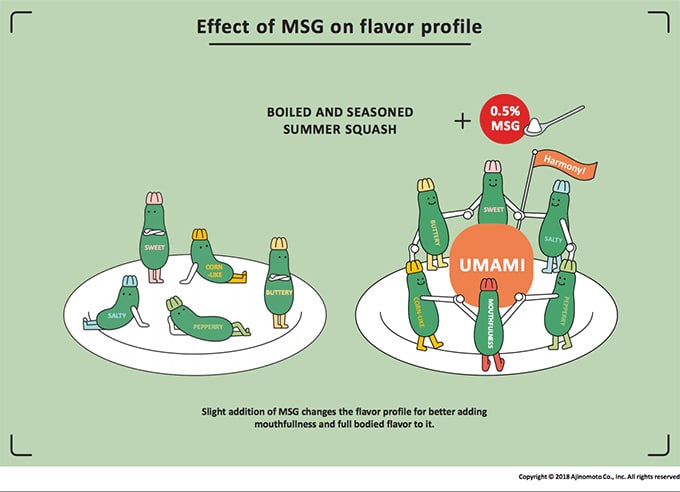
On the left, where the pickles are lounging—some arms-crossed, no smiley faces—is the flavor of boiled zucchini without MSG.
On the right, dancing around the hero MSG (illustrated by umami in the center), are the pickles holding hands in a gesture of total harmony.
The reason I like this image is that I have always envisioned balanced flavor as a harmonious circle. I even write about it in my post, “6 Secrets To Flavor That Make Eating Blissful.”
So it makes me think, is MSG some magic potion for flavor balancing, as in a shortcut to balanced flavor? Balanced flavor for dummies?
I might just have to pick myself up a bottle of pure MSG from Accent, the New Jersey-based manufacturer of MSG commonly available for sale in the United States, and do some studies in my own kitchen.
However, I know that I could certainly make zucchini taste savory and yummy without adding MSG.
So is there any justification to add MSG? Will people accept it? I wonder, will it help more Americans enjoy their vegetables? And is amping up our ingestion of MSG worth these gains?
History of umami
No one can dispute that umami is a desirable flavor. It can be found in traditional foods all over the world.
There’s cured ham and hard cheeses from Europe, anchovies from Scandinavia, beef extract from the U.K., fish sauce from Thailand, and so on.
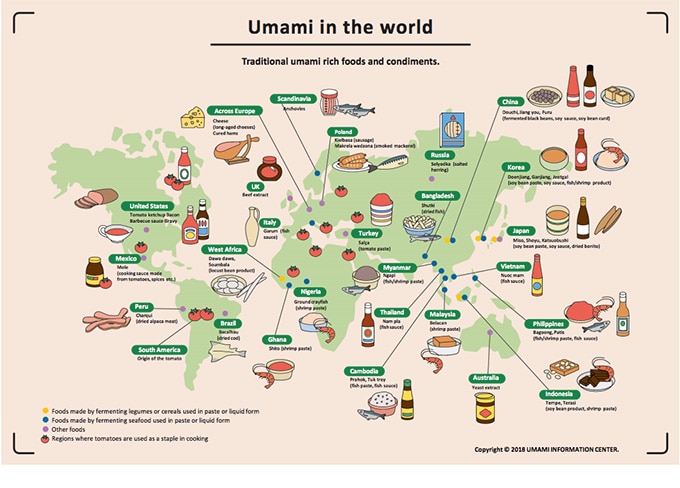
It is evident from world cuisines that our tendency to gravitate toward taste did not need any help from scientists.
For a wonderful case in point, Chef Chris Koetke’s shared a recipe his mom used to make during a cooking demonstration at the forum.
By the way, Koetke was not the only chef to point out that the pursuit of flavor has always led to umami, regardless of the fact that we did not know the word for it.
Mom’s recipe starts with dousing a chunk of pork shoulder in umami-rich Worcestershire sauce and browning it in a skillet.
No one can dispute that umami is a desirable flavor. It can be found in traditional foods all over the world.Click To TweetUmami is naturally rich in a lot of foods, but drying, aging, fermenting, ripening, browning, and cooking, brings out more of it.
Next, you place the pork in a roasting pan, cover it in black pepper, then add piles of umami-rich onions and carrots, and an entire bottle of ketchup.
Ketchup is one of the highest umami-rich foods known to man.
Then you slow roast until the meat and veggies caramelize and cook down into a richly seasoned stew.
Not bad right? I hope you’ve got a better idea about how umami flavor is created now.
The World Umami Forum
I became a guest at the World Umami Forum after winning a prize through Food52’s “Your Best Umami-Centric Recipe” contest.
To be clear, I was not one of the five finalists in this contest, but maybe I was the sixth?
I really don’t know. I was only told that one of the finalists was unable to take the all-expenses paid trip to New York to attend the conference.
The Food52 editors did say that they enjoyed making my recipe of Paratha Stuffed With Savory Caramelized Tomato, so it was also kind of flattering.
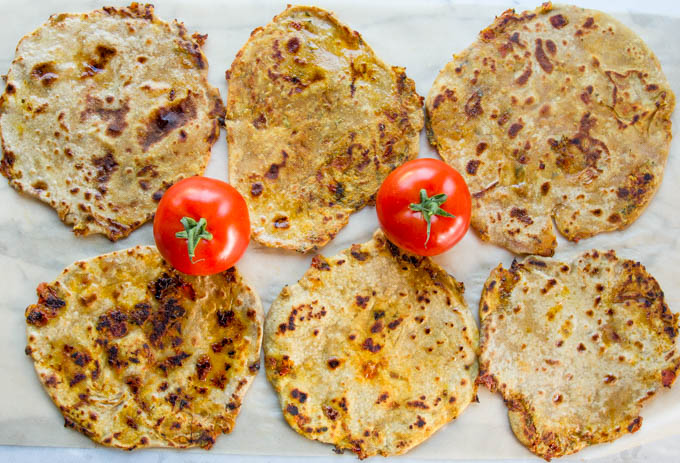
I knew about umami and the fifth taste. Since Buttered Veg is all about balanced flavor, and I practice flavor creation based on the Six Tastes of Ayurveda, I figured this umami forum was a great opportunity to learn.
Who was there?
It turned out that I very much enjoyed my long Uber ride to the event, and my overnight stay in a a hotel next to the National September 11 Memorial & Museum and One World Trade Center. There is nothing like playing the tourist in your own city.
Before arriving, I didn’t exactly know what to expect from the forum.
Then I learned that its sponsor, Ajinomoto, a Japan-based food company, is the world leader in the manufacture of MSG, and that monosodium glutamate is considered to be pure umami.
So that’s the connection!
No issues. Our hosts were gracious as ever. The information was interesting, informative, and fun, and the conference food and service was spectacular.
Who eats MSG?
I asked quite a few folks at the forum, who support MSG as part of their professions, whether they use it in their cooking.
With the exception of one who puts it on her vegetables once in a while, and another who grew up using it regularly (as many with Southeast Asian backgrounds do), the rest said no.
Why not? I asked.
Well … the typical response went, “I am learning more about it at this conference.” The other was, “I didn’t grow up with it.”
My take is that it’s mostly culture that dictates whether people are using it. Just knowing that MSG isn’t harmful, isn’t enough.
While people might not see a need for it today, I am betting this view will change over time. The pursuit of flavor is way too compelling.
How does MSG taste?
The attendees at the forum had an opportunity to try MSG and other umami-rich foods.
A tasting was arranged by Kumiko Ninomiya, PhD., whom Zimmern referred to as the “umami mama.”
First, we ate dried tomato. Tomato is rich in umami, and drying intensifies that. It was the cutest, tastiest tomato. You wouldn’t believe how many different flavors that thing had, and how the flavor changed as you chewed.
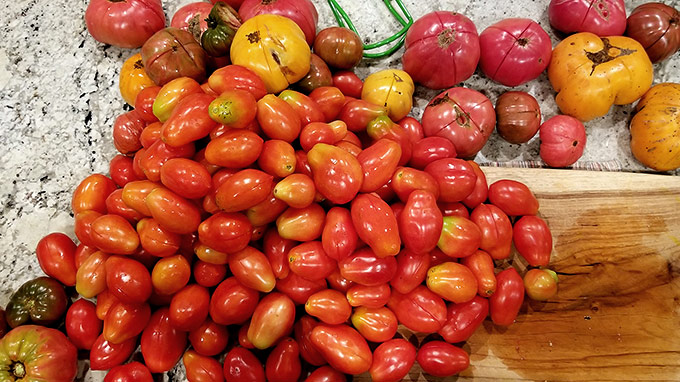
At first it was sour. Then savory. Then, bitter, sweet, toasty, and jammy. The savory taste lingered and lingered after all the complexity subsided.
Next, we tried homemade vegetable bouillon (broth), followed by broth with 0.1 percent MSG, and then with MSG and inosinate.
Inosinate is a nucleotide molecule that carries DNA and assists with metabolism. It also amps up the flavor of MSG if you can believe it.
The MSG in the vegetable broth tasted like chicken—or meatier—however you would like to describe it. This is pretty powerful stuff, right!
For me, it didn’t exactly taste natural. It tasted fattier, like meat, which is a flavor I don’t enjoy.
I preferred the plain stock, but I understand why most people enjoyed the MSG version.
No MSG in our food
As a final note on tasting, I found it fascinating that we were assembled together for MSG, but it was never served to us in our lunch or dinner. I kept waiting for it, but it didn’t happen.
We did watch Zimmern layer MSG into his saucy shrimp dish during a cooking demonstration though. He had a bowl filled with 2 parts salt and 1 part MSG to use as his seasoning.
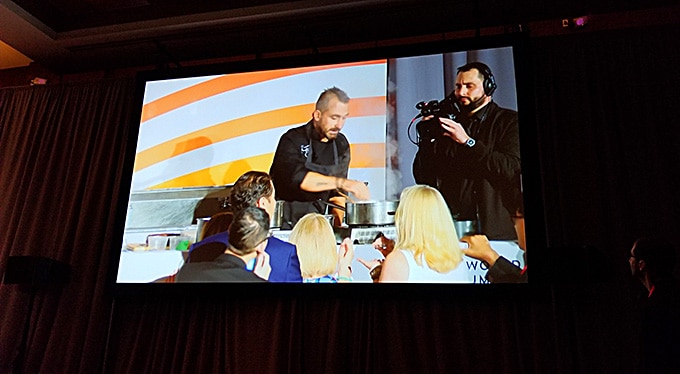
So technically, I ate a minute amount of MSG during the taste test, but that was about it.
The facts show that monosodium glutamate still isn't suitable to serve to a crowd of people, even those who are assembled to learn about its virtues.
I believe this speaks to the enormity of the public perception issue MSG still faces.
Why do we fear MSG?
I suspect most readers won’t know the reason why they fear MSG, and why they associate MSG with Chinese food take-out.
I already told you that MSG was invented in Japan. It actually flourished there for decades, with families proudly keeping shakers of Ajinomoto MSG on the dinner table just like Americans keep salt.
Then from Japan it spread to China and other Southeast Asian countries, such as South Korea, Taiwan, Vietnam, and Indonesia.
It was introduced to America by enterprising Chinese immigrants with restaurants, who just happened to be the first wave of immigrants who cooked with MSG to move to the country. For them, cooking with MSG was a normal part of everyday life.
Chinese food was new to many Americans, and it is possible that people simply weren’t used to the food, which tends to involve high heat and a lot of strong flavors, including MSG.
Chinese restaurant syndrome
So one fine day in 1968, a letter written by a Chinese-American doctor, Robert Ho Man Kwok, was published in the New England Journal of Medicine that would change everything for MSG.
It was titled “Chinese Restaurant Syndrome,” and it read as follows:
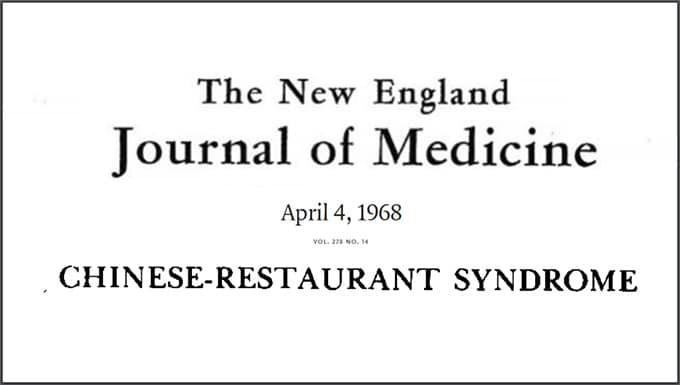
"For several years since I have been in this country, I have experienced a strange syndrome whenever I have eaten out in a Chinese restaurant.”
He described his symptoms as "numbness at the back of the neck, gradually radiating to both arms and the back, and general weakness and palpitation.”
He also suggested the cause could be the high sodium content of the food, soy sauce, the cooking wine, or the MSG.
What followed were more articles corroborating the symptoms, and a series of bunk scientific studies that positively correlated MSG with headaches, nausea, and more.
With that, MSG became a definite no-go in this country, although strangely it continued to thrive in processed foods. It was also widely used by the military to make rations tastier, and they didn’t care about the MSG.
Since then, in the last 30 years, there have been plenty of studies based on sound science that have found there to be no such side effects from the responsible consumption of MSG.
However, the anecdotal stories, including nausea and headaches, continue, and aren’t likely to go away.
Lisa Watson, senior science advisor of the Glutamate Association, says you need to acknowledge that people’s symptoms are real.
It is generally difficult to pinpoint the cause of common symptoms like these. However, they are not caused by MSG, Watson said.
Why I think MSG is here to stay!
Personally, I am not a fan of MSG, and I think you already know that. This is because it is consistent with my general avoidance of additives, and also because I don’t think it is necessary.
My personal style of cooking embraces, and celebrates flavor, and I feel that the flavor I create is better than MSG.
When you combine the right tastes, colors, textures, and qualities, the result is food that is truly exceptional and satisfying.
This is the way practiced by cooks throughout the ages.
I see monosodium glutamate as a shortcut to flavor. It is similar to taking a pill to feel better without resolving the underlying problem.
Learning to create flavor the traditional way, as well as taking the natural approach to your health, are both hard work. And in today’s world, these aren’t seen as priorities.
There are realities to deal with that are seen as more important and urgent than cooking, and if MSG can make food taste better with just a sprinkle, I think that’s appealing for a lot of people.
But true balance comes from knowing where your food comes from, cooking dinner from scratch, and putting love into your work.
(Not to say that you can’t sprinkle MSG with love.)
As a final point, I would question what MSG does to the mind’s balance.
According to the traditional wisdom of Ayurveda, MSG would be in the category of something that creates frenetic energy.
I am positive that scientists have not studied the effect of MSG on the mind, since this is an area they don’t tend to acknowledge.
Conclusion
I hope you found this article helpful and informative. If you would like to purchase a shaker of MSG and try it for yourself—and see what all the hype is about—check the products links below.
What do you think about MSG? Let me know in the comments below.
For more Buttered Veg lifestyle content, follow me on Pinterest, Facebook, Instagram, and YouTube.
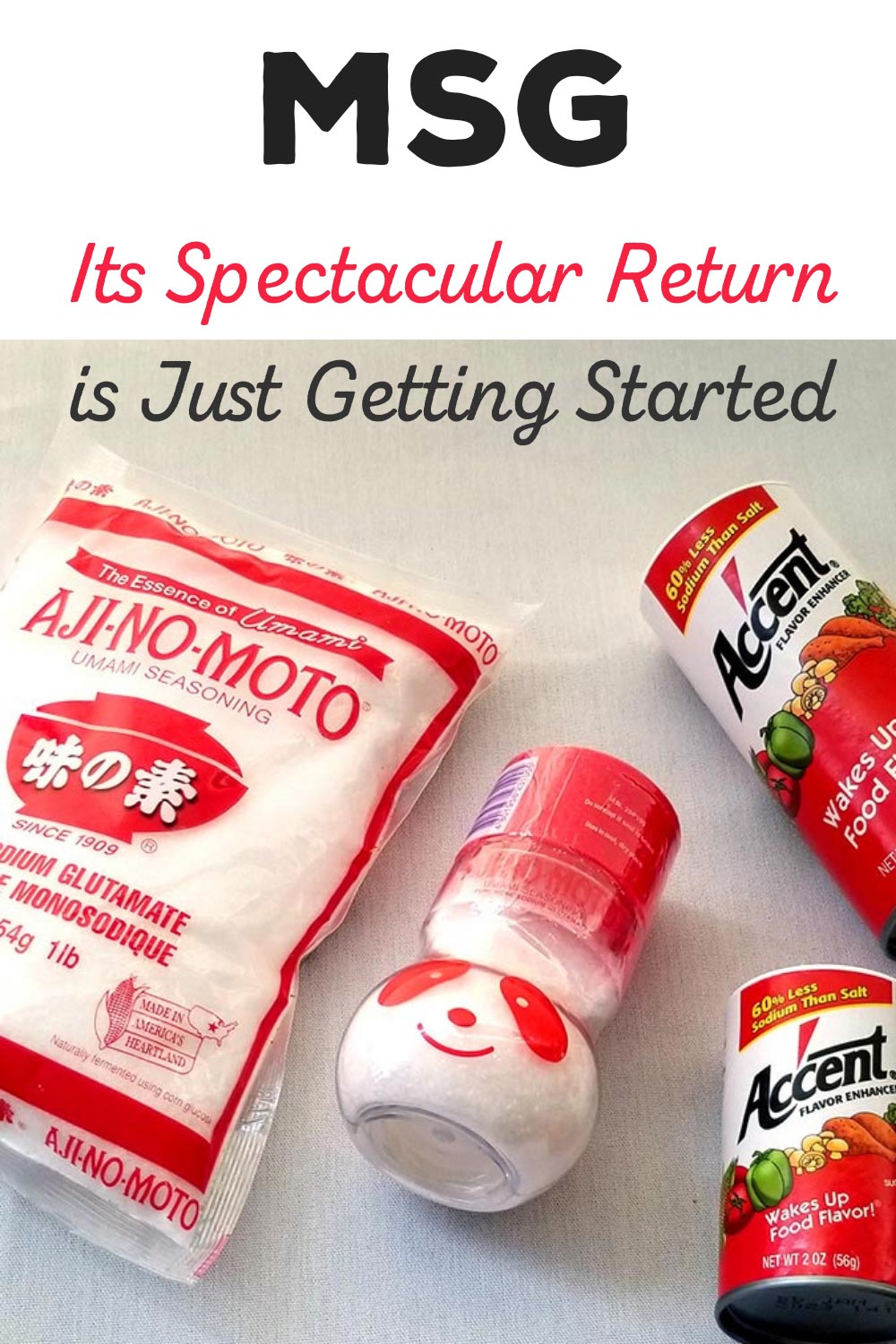









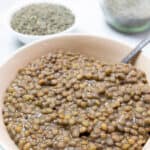
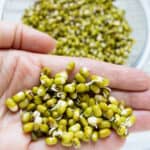
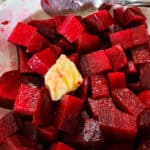

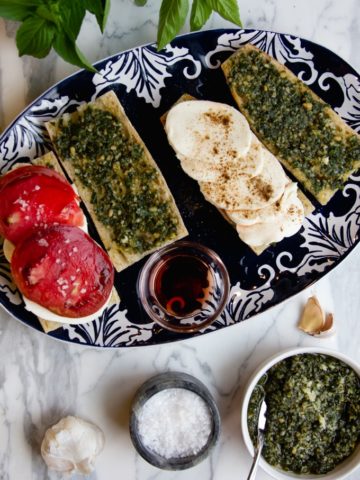
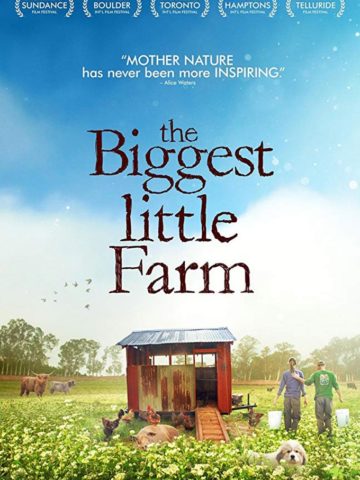

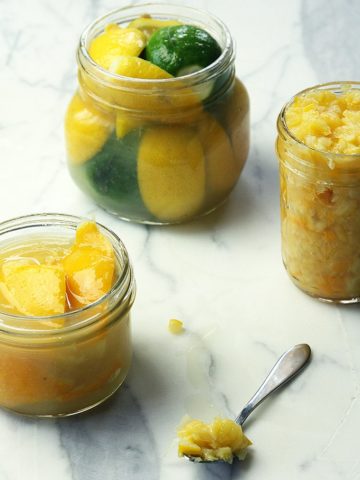
Joey Tipping
Interesting article, Andrea! I used to cook a bit with MSG and thought nothing of it. It did enhance the flavour of the food. When the “study” came out against it I quit using it. I also use very little salt in my cooking preferring to flavour with herbs and spices and various cooking methods. I know i’ll never use MSG again. I don’t think I need it....no matter what master chefs say.
You do get to the most interesting places, Andrea, and congrats on your 6th place win! Hugs.